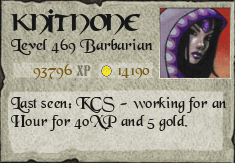Falkland wool comes from sheep grown on the Falkland Islands. It is not a distinct breed but rather a crossbreed of mainly Corriedale and Polwarth. . Therefore, there is no mention of a Falkland sheep in either In Sheep's Clothing or The Knitter's Book of Wool. I did an internet search for Falkland sheep and found several references to it, including the following from the Falkland Islands government site and Crown Mountain Farms. Both mentioned the lack of synthetics and chemicals used in growing the fleece.
http://www.falklands.gov.fk/Agriculture.html#
http://crownmountainfarms.com/clubs/index.php/fiberclub11/fiberinfo10/51
The Falkland I spun was dyed top from Crown Mountain Farms (Purple Rain colorway), and I found very little difference in either feel or draft-ability between the Falkland and the Merino I've spun (also from CMF). The Falkland is not quite as soft and not quite as smooth but still very nice to work with.
This first skein was spun in my default semi-worsted style and chain plied, both on spindles. The only problem I found (actually just a little annoyance) was when smoothing the freshly twisted single it didn't really feel smooth but more like I was ruffling the wool scales back (if that makes any sense). And it didn't seem to make a difference which end of the top I spun from, or whether I spun semi-worsted or true worsted. I got used to it eventually, but it made me wonder what this wool would be like to spin woolen. Perhaps if my next bump of Falkland is a natural, solid or semi-solid color I might try carding the top and spinning woolen. Something to look forward to.
I would very much like to spin this again.
Cheviot
Like the Dorset Horn I spun a few weeks ago, Cheviot is one of the Down breeds. According to The Knitter's Book of Wool it has a micron count of 27-33 and an average staple length of 3 to 5 inches.
This sample was spun from pre-processed fiber from the Spinning Loft's sampler (as was the Dorset Horn). Again, I'm not quite sure what the prep is, combed or carded. It might be pin-drafted roving? maybe? But as I've never seen that, I'm just guessing. The fibers are somewhat aligned but then again not. Regardless, I chose to spin long draw, but because of the unknown prep, it should more acurately be called semi-woolen.
Cheviot feels very similar to the Dorset Horn - spongy, heavy or dense - and maybe a little bit softer. It drafted very easily and gave me fairly thin singles which I made into a three ply yarn. My small sample skein ended up as approximately 37 yards of three-ply with a wpi in the 14-18 range.
It was easy to spin and I would spin it again. I think it would lend itself to worsted spinning more easily than the Dorset Horn, and in the future I would choose between Cheviot and Dorset Horn based on how I planned to spin - Cheviot for worsted and Dorset Horn for woolen.





No comments:
Post a Comment